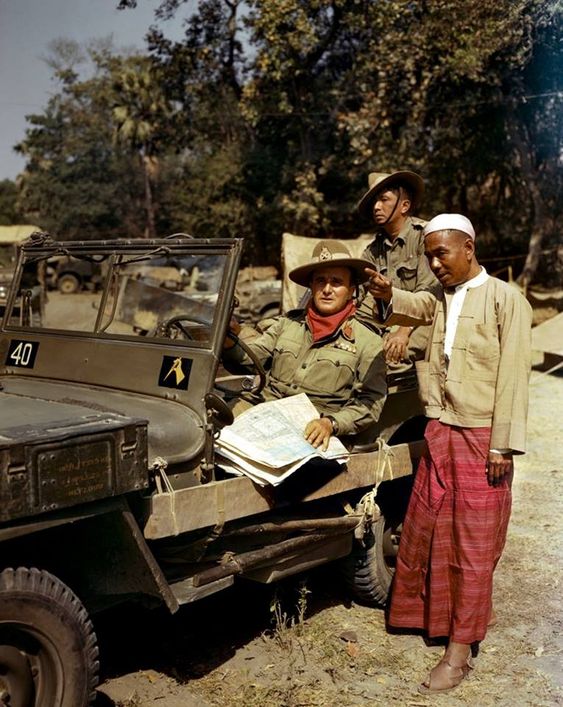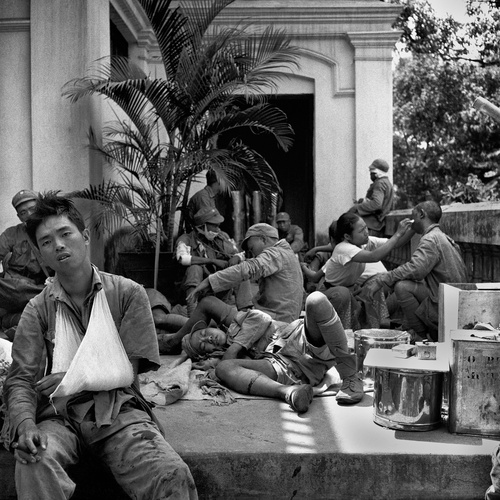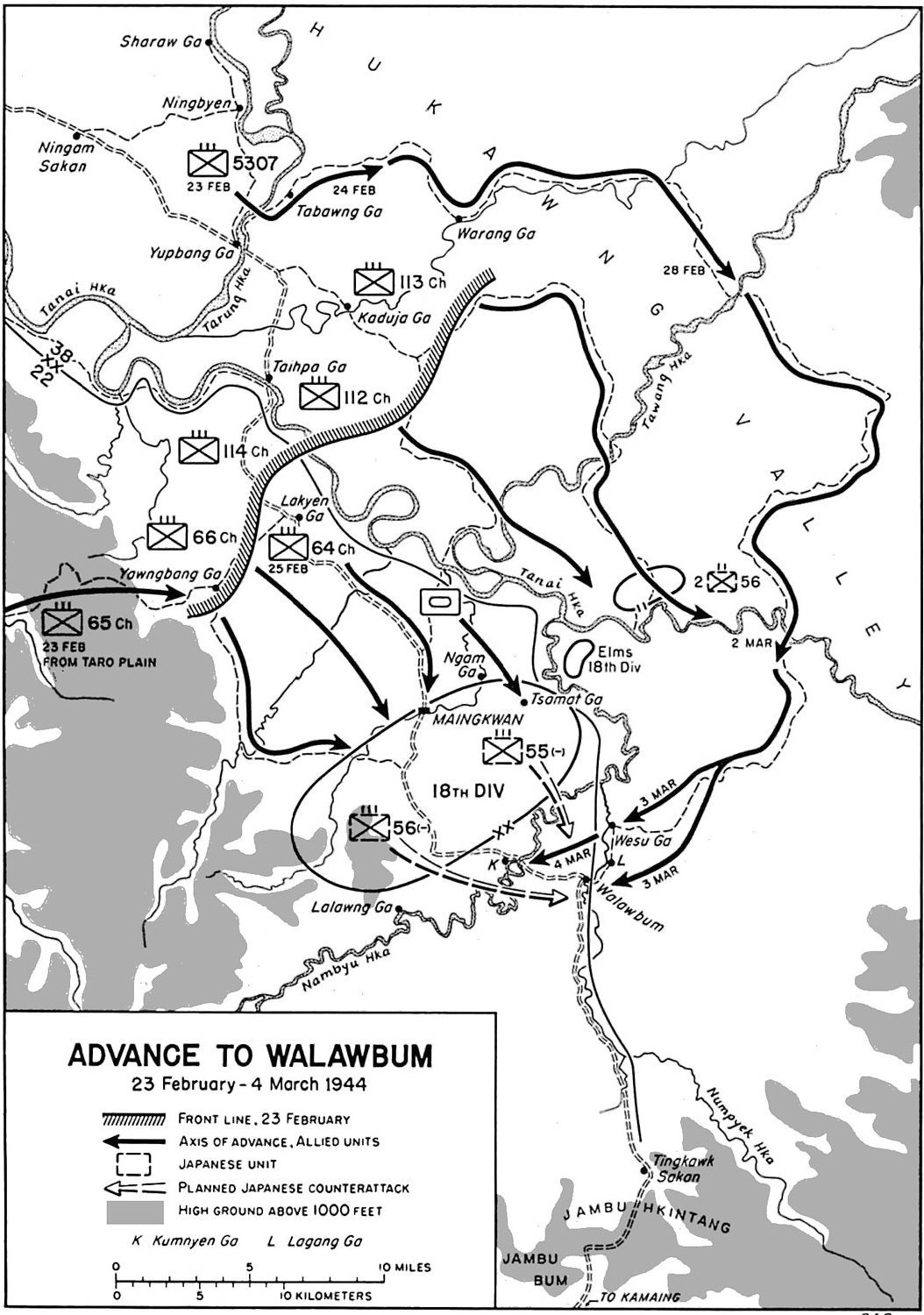As Stilwell flew toward Burma on Dec 20, he was not worried about the technical proficiency of the CAI. That had been developed and tested at Ramgarh. What concerned him was the lack of aggressive leadership on the part of the Chinese officers. The CAI’s 38th Division had entered the Hukawng Valley in October to screen the engineers building the Ledo Road and had been stopped by elements of the Japanese 18th Division. Stilwell was unhappy with the 38th Division’s inability to push ahead and, after arriving at the front on Dec 21, he tried various methods to develop some forward momentum.
He talked directly to the division commander, Sun Li-jen, and issued him firm, detailed orders. He also went down to the front to observe what was happening and to try to force the unit into action. One battalion commander from the 38th Division recounts how Stilwell sometimes drove down to regimental headquarters in his jeep and stayed until the regimental or, in some cases, even the division commander acted to examine an enemy position that was blocking forward movement. Stilwell acknowledged that the Japanese were a tough foe and that the terrain was very difficult. But he also saw the Chinese failure to advance as resulting, in large part, from their own errors: dissipation of force; piece-meal action; extreme caution and extreme slowness of movement; fear of imaginary terrors; bad recon and security; fear of going around; result-loss of men and loss of chance to bag Japs.
Stilwell looked to the 5307th as a solution to several of these errors, especially the fear of going around. Galahad had been formed, as has already been noted, to be an LRPG under Wingate. Its training was focused on developing the cross-country mobility that would enable Stilwell to conduct the end run (enveloping) maneuvers that he felt were needed to encircle the Japanese and dislodge them from their dug-in defenses. But Stilwell would not be able to employ the 5307th in his operation until the end of February. He would have to wait, satisfying himself with the knowledge that at least he had finally taken control of the unit from the British.
When Stilwell first heard that Galahad, the first American ground combat troops to be sent to CBI, would be coming to India to be part of Wingate’s force, he was extremely angry, as the following entry in his diary on Sep 1, 1943, makes clear : what’s the matter with our people? After a long struggle, we get a handful of US troops, and by God, they tell us they are to operate under Wingate! We don’t know enough to handle them, but that exhibitionist does! And what has he done? Made an abortive jaunt to Katha, got caught east of the Irrawaddy River and come out with a loss of 40% – Net result, cut the Railroad that our people had already cut by air attacks. Now he’s an expert. This is enough to discourage Christ.
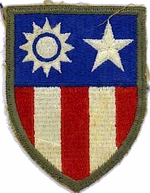 Stilwell then began a series of moves in which he attempted to gain operational control of Galahad. These efforts finally reached the point where Gen Marshall felt compelled to send him a message confirming Wingates’ operational control over the 5307th and reminding him that coalition warfare required compromise: All American troops in China, Burma, India (including Galahad) are under your command. As Deputy Commander to Mountbatten, you are to employ your forces, including Chinese troops attached by the Generalissimo, so as to ensure an effective united effort by South-East Asian Command. Galahad was dispatched to India to take part in long-range penetration operations. If these operations are to be commanded by Wingate, the American group should operate in combat under his central direction. The individual and unit training, as well as administration and supply, must remain the responsibility of Gen Stilwell. However, their training must be closely coordinated with that of the British. We must all eat some crow if we are to fight the same war together. The impact on the Japs is the pay-off.
Stilwell then began a series of moves in which he attempted to gain operational control of Galahad. These efforts finally reached the point where Gen Marshall felt compelled to send him a message confirming Wingates’ operational control over the 5307th and reminding him that coalition warfare required compromise: All American troops in China, Burma, India (including Galahad) are under your command. As Deputy Commander to Mountbatten, you are to employ your forces, including Chinese troops attached by the Generalissimo, so as to ensure an effective united effort by South-East Asian Command. Galahad was dispatched to India to take part in long-range penetration operations. If these operations are to be commanded by Wingate, the American group should operate in combat under his central direction. The individual and unit training, as well as administration and supply, must remain the responsibility of Gen Stilwell. However, their training must be closely coordinated with that of the British. We must all eat some crow if we are to fight the same war together. The impact on the Japs is the pay-off.
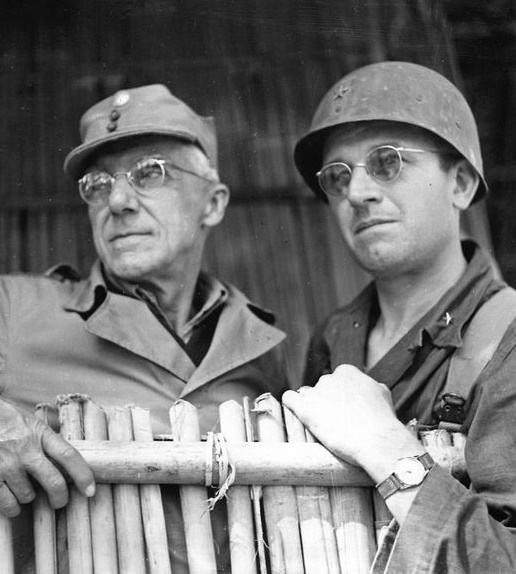 Stilwell, however, did not give up his pursuit of Galahad. At the Sextant Conference, he and his chief of staff for plans and operations, G-3 for CBI, Col Frank D. Merrill, discussed the employment of Galahad with Marshall and finally convinced him to support a transfer of operational control of the unit to Stilwell.
Stilwell, however, did not give up his pursuit of Galahad. At the Sextant Conference, he and his chief of staff for plans and operations, G-3 for CBI, Col Frank D. Merrill, discussed the employment of Galahad with Marshall and finally convinced him to support a transfer of operational control of the unit to Stilwell.
Before the conference ended, a decision was reached. Galahad was to be assigned to Stilwell. On Jan 1, 1943, Galahad was officially designated the 5307th Composite Regiment. The next day, the name was changed to Composite Unit (Provisional). Apparently, this name change was necessitated by the realization that the man chosen by Stilwell to command the unit, Frank D. Merrill, was now a brigadier general and should command more than a provisional regiment. Merrill arrived at the 5307’s training area in central India on Jan 4, and assumed command immediately. Within days, despite Hunter’s feeling that the 5307 needed another month of training, Merrill radioed Stilwell that the unit’s training had advanced to a state which would permit to be committed to action.
On Jan 8, the 5307 was attached to Stilwell’s field command in northern Burma and directed to move to Ledo by Feb 7. The 5307 moved from Ramgarh to Ledo by train, covering a distance of around 1000 miles. Then they marched 140 miles by foot on the newly completed Ledo Road to Ningbyen, a small village in the northern Hukawng Valley. There, the unit assembled during Feb 20-21, received an airdrop of supplies and prepared for its first mission.
While the 5307 was moving from Ramgarh to Ningbyen, on the battle line of the Chinese Army in India fighting was improving. In a message sent to Marshall on Jan 28, Stilwell expressed satisfaction with the Chinese soldiers’ performance and also made reference to something that constantly irritated him, namely, British unwillingness to recognize the Chinese Army’s accomplishments: My opinion of the Chinese soldier is what it has always been. With good training, equipment, and leadership, he is as good as anybody … The foregoing is heartily concurred in by all liaison officers with whom I have talked. PS. I will keep you informed of developments since I suspect you will hear very little about us in the SEAC communiques.
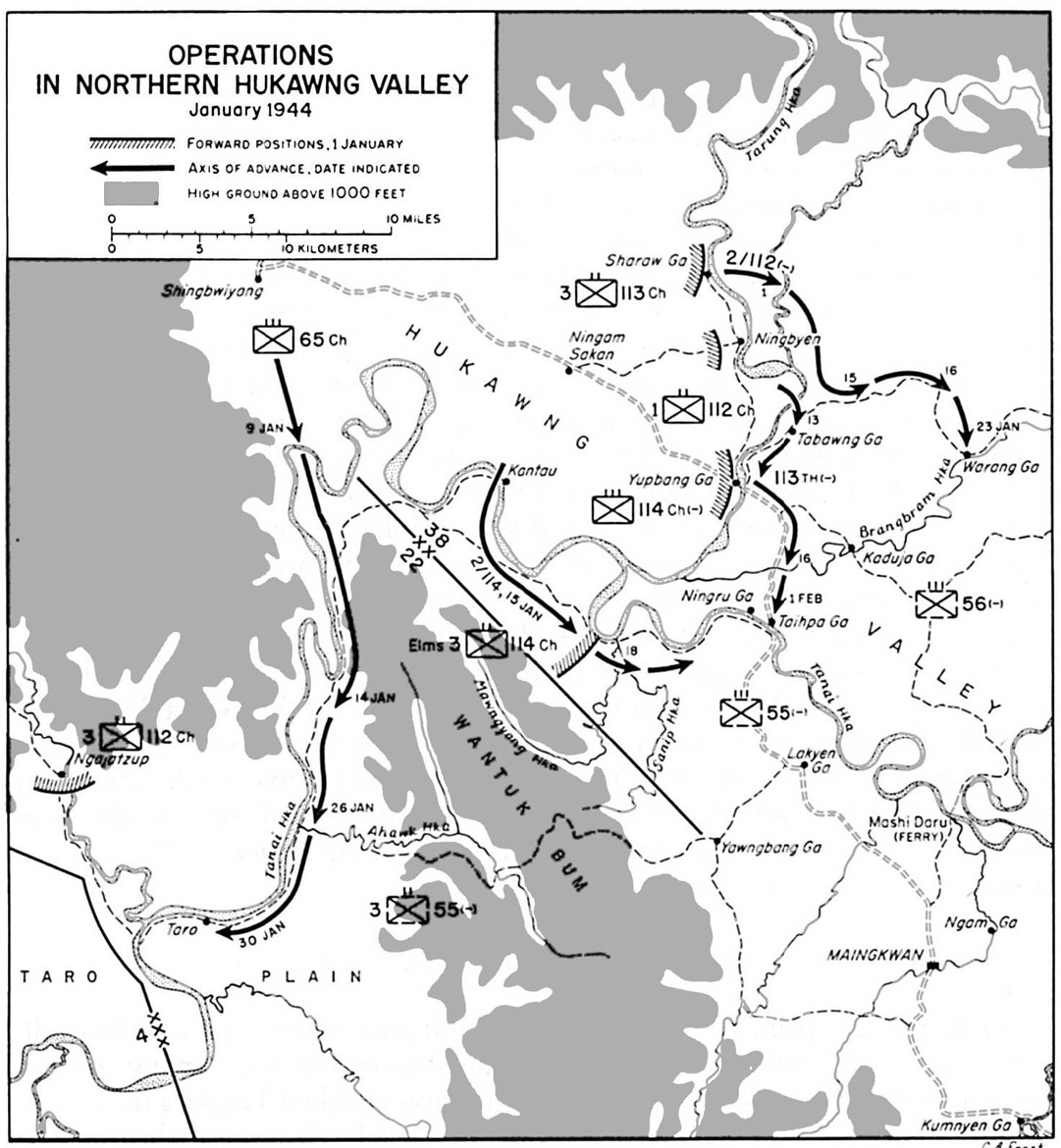 On Feb 24, Stilwell told Marshall that a mistake by the 66th Regiment (22nd Chinese Division) had cost them a chance to encircle some Japanese, but he gave Marshall a favorable assessment for both the 22nd and 38th Divisions. He reported that Chinese morale was high and said that he was hoping for a better performance during the next step. This step was to be the 5307’s first operation.
On Feb 24, Stilwell told Marshall that a mistake by the 66th Regiment (22nd Chinese Division) had cost them a chance to encircle some Japanese, but he gave Marshall a favorable assessment for both the 22nd and 38th Divisions. He reported that Chinese morale was high and said that he was hoping for a better performance during the next step. This step was to be the 5307’s first operation.
Even as the Chinese Army was advancing in the field and the 5307 was moving forward to join the fighting, there was, at the strategic-political level, some backsliding by the coalition partners. Chiang Kai-Shek’s continued refusal to send his Y-Force across the Salween River into Burma was evidence of the low priority China gave the campaign. The Chinese slow rate of movement reflected the fear of failure. This situation, in turn, encouraged the British feeling, long-held, that nothing worthwhile could be accomplished in northern Burma.
Firm British support for the north Burma campaign was essential because Burma was in a British theater and Stilwell had two British superiors whose approval was required for him to act. In his position as the acting deputy commander of SEAC, Stilwell was Mountbatten’s superior. In addition, on Dec 31, Stilwell had placed his field combat command that controlled the Chinese Army and the 5307 under Gen William J. Slim, commander of the British Fourteenth Army.
In early January, the British planners in SEAC began trying to torpedo Stilwell’s offensive. Looking at the Ledo Force’s slow rate of advance, they were very doubtful that Myitkyina could be taken soon enough to allow the Ledo Road to be constructed before the monsoon rains came. Without this road link, they concluded, Myitkyina could not be held. In place of Stilwell’s campaign, they revived and Mountbatten approved an earlier plan to bypass Burma and attack Sumatra as a step toward retaking the Dutch East Indies and Singapore.
This led Stilwell to write angrily in his diary on Jan 8: Mountbatten welches on the entire program for the Burma offensive. G-mo’s fault of course. Limey program: (1) stop road at Ledo, (2) do not attack Burma, (3) go to Sumatra, and (4) include Hong Kong in SEAC!
